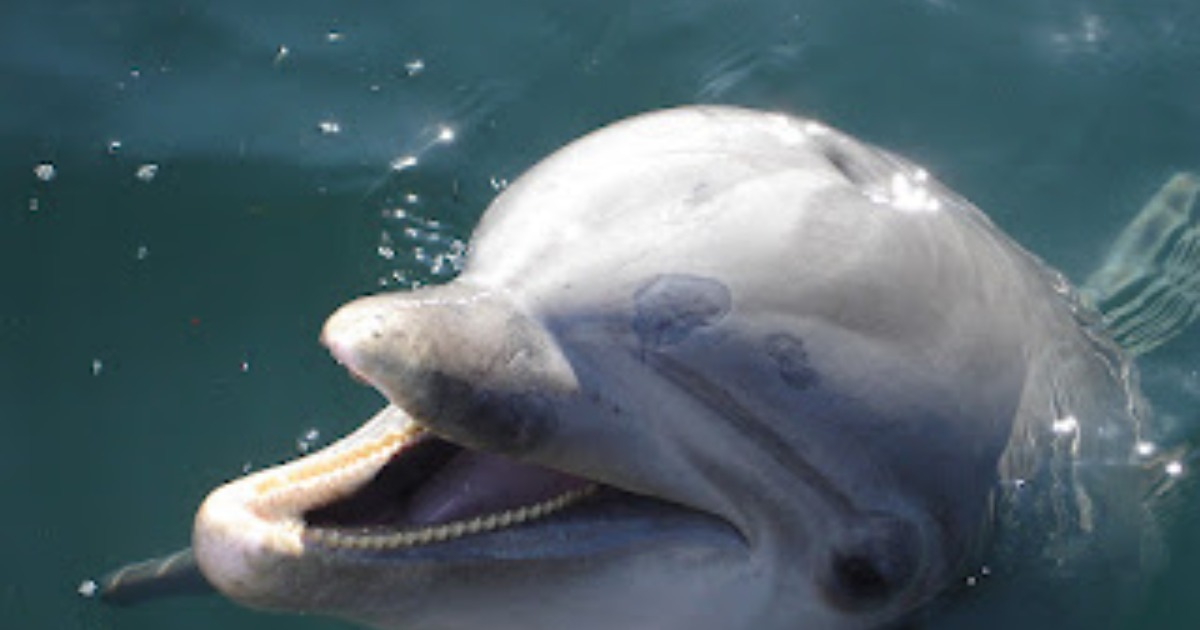Why do sharks fear cute Dolphins?
Sharks and dolphins are arguably the most popular marine animals.
While sharks are thought to be dangerous, and everyone loves dolphins, the reality is slightly different.
It’s actually dolphins the ones intimidating and posing a danger to sharks, not vice-versa.
Welcome to wild and domestic, today we will tell you the story of dolphins and sharks,
Introducing some of the most fascinating species and talking about their relationship in the wild.
Dolphins 101
There are 4 main families of dolphins with over 40 distinct species.
These mammals can be found almost all around the world, but the vast majority live in the oceans.
However, there are also dolphins in South America and South Asia living in freshwater rivers.
All dolphins are warm-blooded and feed on fish, but some bigger species take on other mammals like seals.
In addition to that, all species have a fatty tissue which is called blubber. It’s also found in penguins and helps dolphins to stay warm.
Now, let’s take a look at each family separately and learn about the most fascinating species.
Oceanic dolphins
The biggest family is called oceanic dolphins, and there are about 40 separate species, making it the biggest dolphin family.
Bottlenose dolphin
Probably the most famous species from this family is called the bottlenose dolphin, and if you’ve ever been to an aquarium, you’ve definitely seen them performing various tricks.
It’s because they’re one of the most intelligent animals in the world, capable of memorizing complex sequences.
Not only that but they’re known to use marine sponges to collect food and can even pass on their knowledge to offspring!
Bottlenose dolphins are found in all oceans of the world but prefer warmer climates.
Finally, they grow up to 13 feet (4 m) long and weigh up to 1430 pounds (650 kg), although most individuals weigh 660 pounds (300 kg).
Orca (Killer whale)
Another popular species of the same family is the orca, the biggest dolphin species in the world.
Most of the biggest aquariums in the world also keep these dolphins, and currently, there are 59 orcas in captivity.
Just like their bottlenose cousins, orcas are also found in all oceans of the world but prefer colder waters like those around Alaska and Norway.
They’re the apex predators of the ocean, having a varied diet of fish, mammals, seabirds, and turtles.
Orca males grow up to 26 feet (8 m) long, and weigh over 6 tonnes! So it comes as no surprise that this species has no natural predators.
Indian river dolphins.
Let’s move on to some less-known dolphins, and start with the Indian river dolphins.
Currently, there are only 2 extant species, one of them is called the Ganges river dolphin.
As the name suggests, it lives in the Ganges river basin, covering countries like India, Nepal, and Bangladesh.
India has even recognized this species as its National Aquatic Animal, and it’s a relatively new species as the earliest fossil found is just 12,000 years old, indicating a recent split from its family member Indus river dolphin.
This species has one of the biggest ranges of vocalizations which include clicks, twitters, and even whistles.
Because their habitat primarily consists of murky water, their echolocation abilities are supreme and they don’t depend on sight to find prey.
Indian river dolphins prey
They primarily feed on pawns and fish but occasionally prey on bigger animals like the Ganges shark or turtles.
Finally, the Indus river dolphins grow up to 8 feet (2.4 m) and weigh about 350 pounds (160 kg).
New world river dolphins
Now let’s go to South America, which is home to a family called the New World river dolphins, which are home to just 3 species.
Amazon river dolphin
One of them is called the Amazon river dolphin, and it’s actually the biggest of its kind, growing to 8 feet (2.5 m) in length and 410 pounds (185 kg) in weight.
“pink river dolphin”.
The most unique feature of this species is its pink color, which is more vibrant in males. It brings them the nickname of “pink river dolphin”.
This species is found all around the Amazon basin, and are known to migrate during floods.
Amazon river dolphin Prey
The Amazon river dolphin is thought to have the most varied diet of all dolphin species. They are known to feed on turtles, crabs, and over 50 species of fish.
Brackish dolphins.
Finally, let’s take a look at the fourth and smallest dolphin family, called the brackish dolphins.
It’s called so because these dolphins live in brackish water, which has a salinity level between freshwater and seawater.
Unfortunately, there’s only a single extant species of this family.
It’s called the La Plata dolphin because it’s most abundant in the Río de la Plata estuary located on the eastern coast of South America.
They are up to 6 feet (1.82 m) long and weigh up to 110 pounds (50 kg).
However, the most unique feature of this species is its beak. It can be up to 1 foot (30 cm) long, and it’s actually the longest beak in proportion to body size out of all cetaceans, an order including dolphins, porpoises, and whales.
Now that you’ve met some of the most interesting dolphin species, let’s talk about sharks!
Sharks 101
Sharks are one of the most feared sea creatures, and movies like “Jaws” don’t help such an image. Why are Sharks afraid of Dolphins?
In reality, sharks are responsible for just over 4 human deaths per year, so they definitely aren’t the monsters they are usually made out to be.
Unlike dolphins, who are mammals, sharks are fish with cartilaginous skeletons. They’re actually more closely related to rays than dolphins!
Sharks are also way more diverse than dolphins, and there are over 35 distinct families with more than 1,000 species.
They can be found in all oceans of the world and in a wide range of habitats, including the deep sea, open ocean, and even under the ice!
Because they are so many families, we can’t talk about all of them, but let’s see some of the most fascinating shark species.
The basking shark second-largest extant fish species
The basking shark is the second-largest extant fish species, and they’re just one of the three shark species that feed on plankton.
Such a diet explains their unique mouth which can open up to 3 feet (90 cm) wide! It allows them to filter up to 450 tonnes of water per hour, and find plankton there.
Basking sharks usually grow up to 26 feet long and weigh 10,000 pounds (450 kg), but many bigger individuals have been found.
The Angel shark species
Another fascinating shark species is called the angel shark, and they can be found in the Mediterranean Sea and warmer parts of the Atlantic ocean.
This species is unique because of its flat body, which is very reminiscent of stingrays.
Angel sharks live about 500 feet (150 m) deep and spend most of their days buried in the seabed. I wonder why Sharks fear cute and playful Dolphins
While they’re smaller sharks, reaching only 7 feet (2.1 m) in length and 77 pounds (35 kg) in weight, they have sharp teeth that easily finish off prey like fish, skates, and mollusks.
Angel sharks hunt by camouflaging with the sea bed and waiting for the right prey to pass nearby.
Unfortunately, like many shark and dolphin species, they’re critically endangered, but in recent decades the European Union has launched many initiatives aimed at preserving these species.
Now that you’ve seen some intriguing sharks, let’s discuss their relationship with dolphins.
Why Are Sharks Afraid of Dolphins?
Dolphins and sharks overlap in habitat and diet, and it’s uncommon to spot them side by side.
As a result, the relationship between these two animals is studied extensively, and some of the details are going to surprise you.
Most people see dolphins as cute sea puppies (well, except for that weird Simpsons episode), while sharks are seen as these cold-blooded monsters.
In reality, sharks are afraid of dolphins and there are several key reasons why.
First of all, dolphins are just that mobile and agile.
It’s because the bone skeleton of dolphins allows for more movement than the cartilaginous structure of sharks.
Additionally, dolphins have horizontal tails, while sharks have vertical tails.
It makes dolphins capable of quick up-and-down movements, while sharks are extremely limited in moving vertically.
Dolphins advantage
Another advantage of the bone skeleton is that the snouts of dolphins are sturdy. They are often utilized as battering rams charging the soft bodies of sharks.
Another reason why sharks are afraid of dolphins is that sharks are solitary creatures who live and hunt on their own, while dolphins live in what are called pods or schools, consisting of 2 to 30 individuals.
Even if a shark spots a lonely dolphin, it doesn’t have good odds of preying on it.
Most dolphins have better eyesight than sharks, and they’re sure to spot one coming before it’s too late.
And even if the shark manages to ambush a lonely dolphin, chances are it’s going to escape.
Most dolphin species are much faster than sharks.
For example, the fastest dolphin species, the common dolphin, can reach the speed of 37 mph (60 kph), while the fastest shark, the shortfin mako shark, can accelerate to 35 mph (57 kph).
If we look at the scary boys, the difference is even bigger.
The biggest dolphin, the orca, can swim at 30 mph (48 kph), while the great white shark is capable of just 25 mph (40 kph).
Talking about these two creatures, it’s worth mentioning that orcas occasionally feast on the great whites. That’s why they’re sometimes referred to as “killer whales”.
Now you know why sharks are afraid of dolphins and you’ve been introduced to some of the most fascinating species of these two animals.



